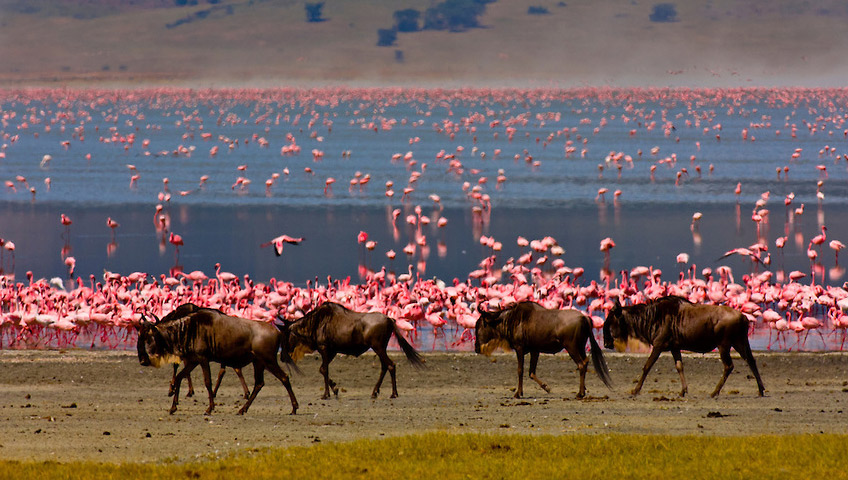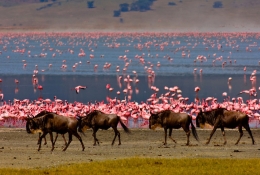
Ngorongoro Consarvation Area
It’s close to the Serengeti, North east of Tanzania. Lake Eyasi marks part of its southern boundary and the Serengeti National Park lies to the west.
Attractions:
The conversation area encompasses Ngorongoro Crater, Embagai Crater, Olduvai Gorge — famous for its palaeontological relics — and Lake Masek. The Crater is a home to small number of black rhinoceroses, sustains a huge population of ungulates and has the most concentrated numbers of lions know.
However, there are an estimated 30,000 animals living in the crater. Encounters with animals are frequent and there is a wide variety of game in the crater. These include lions, elephants and rhinos as well as buffaloes, Thompson’s gazelles, wildebeests and zebras. You are also likely to see ostriches and Lake Magadi, the soda lake at the floor of the crater, is home to thousands of flamingos. There are also dive — bombing kites which are recognized for their skills of snatching visitors’ foods at the Lerai forest, which is a good place for a picnic lunch.
How to get there:
Ngorongoro is 190 km west of Arusha, 60 km from Lake Manyara and 145 km from Serengeti and is reached via the Arusha — Serengeti road. The drive from Arusha takes about 4 hours and is a splendid journey with a view of Mt. Kilimanjaro all the way, arching over the right shoulder of Mt. Meru. You’ll go across the bottom of the Rift Valley and pass the entrance to the Lake Manyara National Park on the left of the Great North Road at the foot of the Great Rift Escarpment.
Just beyond the entrance to the park, the road climbs very steeply up the escarpment and at the top, the turning to the Lake Manyara Hotel is off to the left. From here, the country is hilly and fertile and you will climb up to the Mbulu Plateau that is farmed with wheat, maize and coffee. At Karatu (known as Safari Junction), 25 km from Manyara, is the turning off to Gibbs Farm, which is 5 km off the main road. You turn right towards the park entrance and on the approach to Lodware Gate as the main altitude increases the temperature starts to fall. Your first view of the crater comes at Heroes Point (2’286 m). The road continues to climb through the forest to the crater rim.










